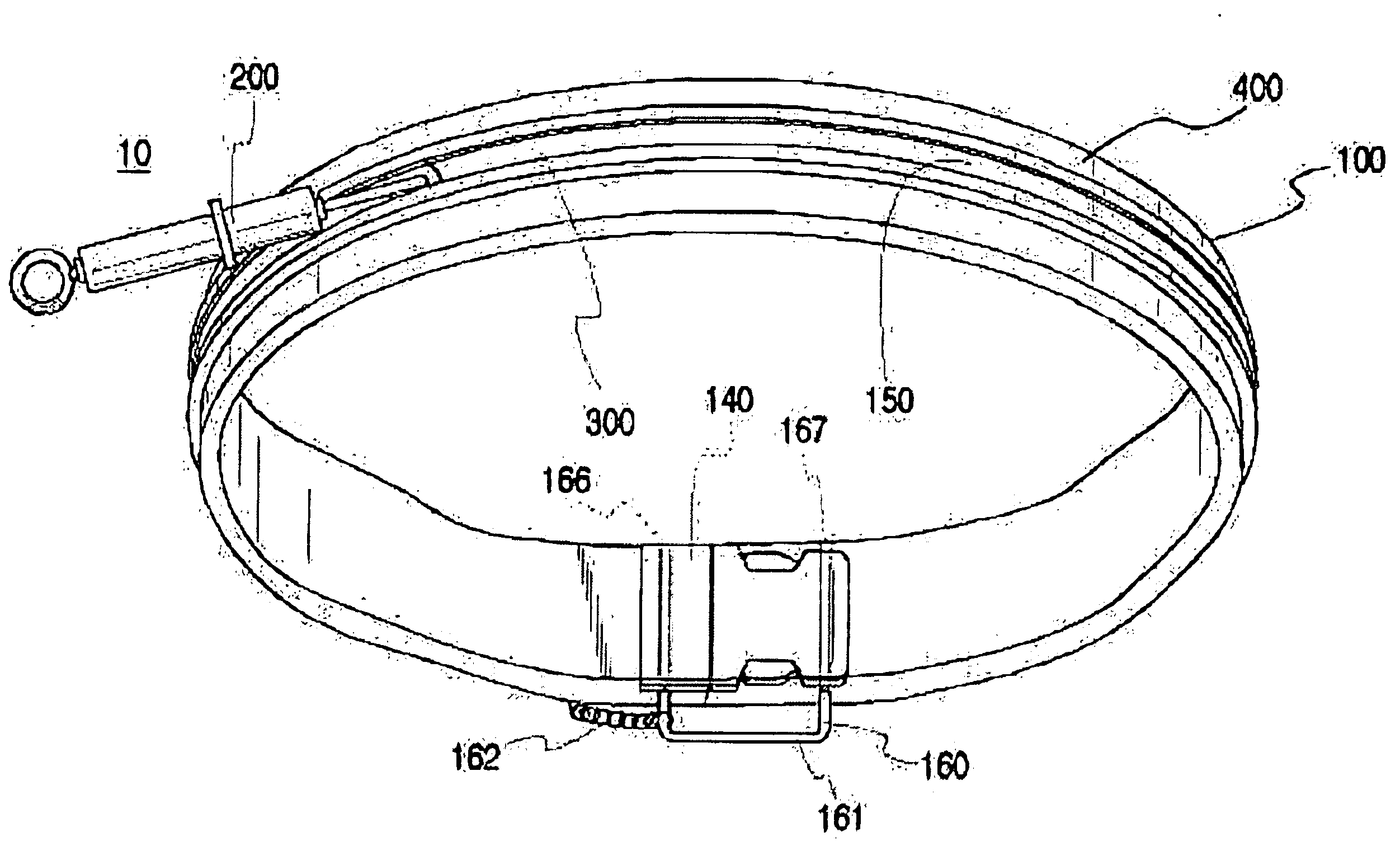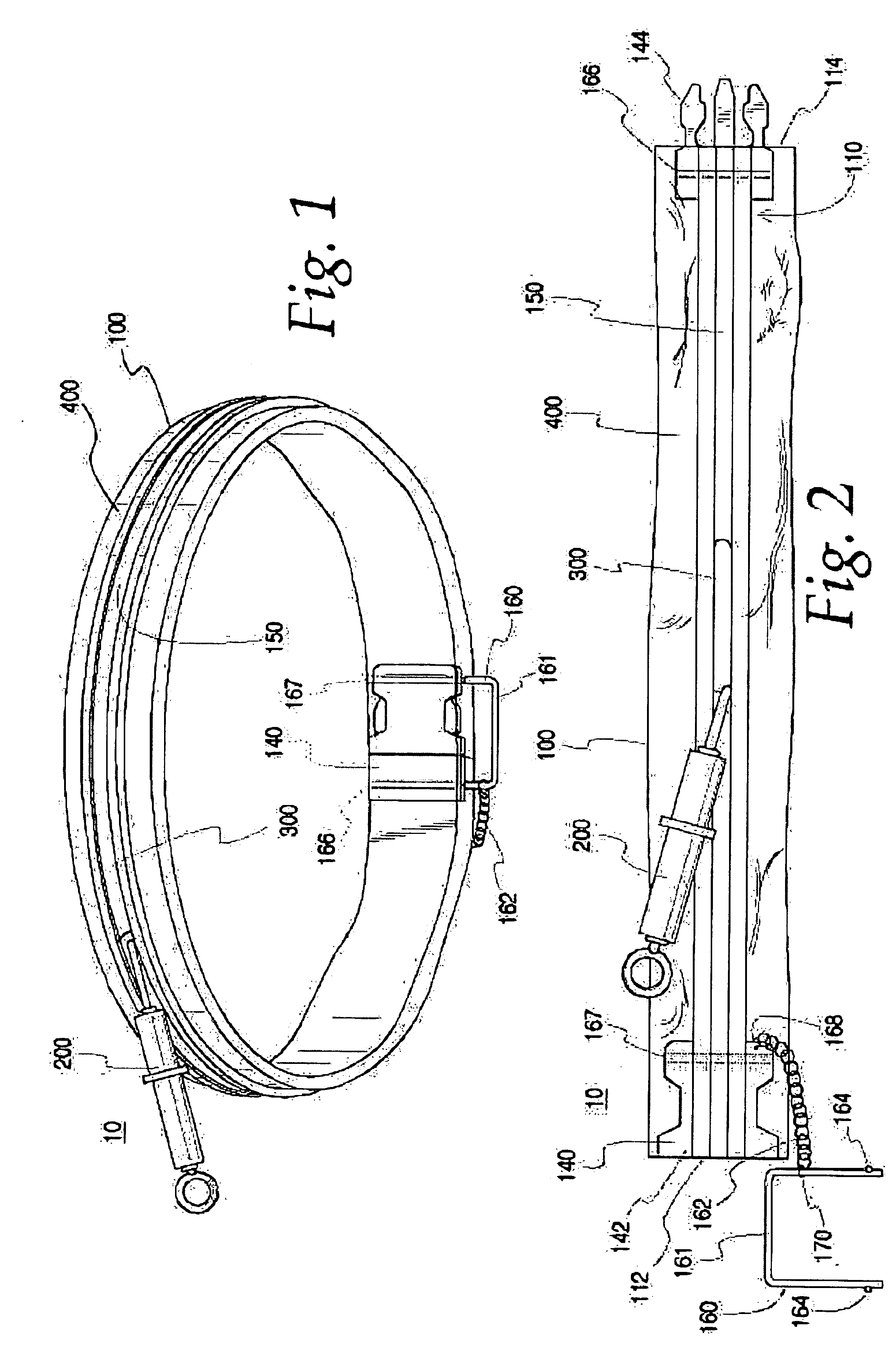Tangle-proof collar assembly
a collar and tangle-proof technology, applied in the field of tangle-proof collar assemblies, can solve the problems of improving, exposing the collar to infection by parasites and microbial organisms, and reducing the risk of direct and indirect injury, and eliminating tangles
- Summary
- Abstract
- Description
- Claims
- Application Information
AI Technical Summary
Problems solved by technology
Method used
Image
Examples
Embodiment Construction
FIGS. 1-5 illustrate the present embodiment of a tangle-proof collar assembly in accordance with the present invention.
Referring to FIG. 1, a drawing in perspective view of one embodiment of a tangle-proof collar assembly is generally shown at number 10. The tangle-proof collar assembly 10 of the present invention generally comprises a collar 100, an integrated latch assembly 140, a secondary latch assembly 160, a swivel truck assembly 200, a debris shield 300 and a flexible pad 400.
Referring to FIGS. 2, 3A, 3B, 3C and 4, one embodiment of the collar of the tangle-proof collar assembly 10 is generally shown at number 100. The collar 100 comprises a channel 110 having a first end 112, a second end 114, a first side 116, a second side 118, a topside 120 and a bottom side 122. The channel 110 is formed into a ring when the first end 112 and second end 114 of the channel 110 are joined by the integrated latch assembly 140 (FIG. 1). The channel 110 includes a slotted circumferential open...
PUM
 Login to View More
Login to View More Abstract
Description
Claims
Application Information
 Login to View More
Login to View More - R&D
- Intellectual Property
- Life Sciences
- Materials
- Tech Scout
- Unparalleled Data Quality
- Higher Quality Content
- 60% Fewer Hallucinations
Browse by: Latest US Patents, China's latest patents, Technical Efficacy Thesaurus, Application Domain, Technology Topic, Popular Technical Reports.
© 2025 PatSnap. All rights reserved.Legal|Privacy policy|Modern Slavery Act Transparency Statement|Sitemap|About US| Contact US: help@patsnap.com



